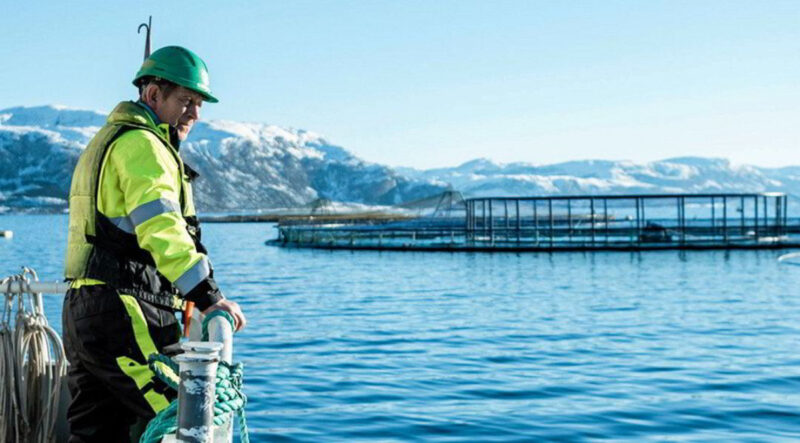Summit to hear Canada’s aquaculture success and setbacks
Global conference will also showcase science, technology, business, and social aspects of aquaculture
By Fabian Dawson
SeaWestNews
Canada’s innovations in harvesting the oceans will be on display in an upcoming conference which will feature hundreds of world-class speakers and delegates from around the globe on the science, technology, business, and social aspects of aquaculture.
The conference to be held in August in St. John’s, Newfoundland will hear the contrasting tales of Canada’s two coasts, where salmon farming is being embraced in Atlantic Canada and shunned on the Pacific coast.
The conference themed as theLeading Edge of Food Production comes in the wake of renewed commitments by Atlantic Canada premiers to boost the role of aquaculture in creating sustainable economic opportunities for many rural, coastal, and Indigenous communities in the region.
It will also hear how salmon farmers on Canada’s west coast, demonised by the science-deficit propaganda of anti-fish farming activists, keep pumping millions of dollars in creative innovations to showcase the future of the sustainable food production industry.
There will be somewhere in the vicinity of 400 presentations on topics ranging from policy and regulation to the science and innovation of aquaculture, said Cyr Couturier, a past-president of the Canadian Aquaculture Industry Alliance (CAIA).
Here is an excerpt of an article co-authored by Couturier and veteran fisheries expert Darrell Green on Aquaculture in Canada published ahead of the conference.
Canada is blessed with an abundance of freshwater and relatively pristine coastal waters spanning three oceans. The productive area for commercial seafood farming is barely used by aquaculture, with less than 1 percent of the suitable farming areas utilized for commercial farming purposes. Once in the top ten “fishery” nations in terms of productivity, based on landings of seafood in the 1980s, Canada now sits around 22nd globally, in terms of production of seafood. Arguably, if it was not for aquaculture growth in the past four decades, we would be much further behind. Most seafood-producing countries have embraced sustainable aquaculture as the future of food production globally to provide environmental, social, and economic opportunities to over 20 million farmers. There are currently over 3 billion seafood meals consumed daily by the 8 billion citizens of the planet, of which more than 50 percent comes from aquaculture. This is expected to grow over the next decades as humanity searches for sustainable solutions for food security and supply, and aquaculture will play a major role.
Today, there are commercial seafood farming operations in all ten Canadian provinces, and at least 1 of its 3 territories, with over a dozen species at the commercial or pre-commercial stages of production. Species range from eels, scallops, oysters, mussels, clams, seaweeds (several species), phytoplankton, to trout, charr, salmon, whitefish, black cod (sablefish), and several others in various stages of development, including sea cucumbers, sea urchins, seaweeds, and others.
The principal species of farmed seafood, making up the bulk of production (95 percent by volume), in Canada consists of Atlantic salmon, blue mussels, oysters (Eastern and Pacific species) and rainbow trout, with several others showing promise. Production facilities include recirculating aquaculture systems and hatchery-nurseries for on-land production of “seedlings,” net-pen and longline systems for open waters and even ponds for seasonal on growing.
Today, commercial aquaculture in Canada is a thriving sector employing over 20,000 Canadians in the production process from egg to plate. The sector is relatively young, speaking demographically, and about 30 percent are women in various positions. There are in excess of 50 First Nations participating in the aquaculture sector in Canada. These First Nations are either sole-enterprise owners or operate in partnership with their local communities in farming, processing, or supplier activities.
Unfortunately, Canada continues to fall behind in terms of production of farmed seafood, compared to its competitors. There has been no overall growth in production in that last twenty years. There are indeed challenges with the regulatory frame and there is limited support for research, development, and innovation, compared with other countries, so efforts to improve matters have been the subject of vigorous advocacy for about two decades. The real challenge is to take advantage of the opportunity to grow the sector in today’s framework of social, environmental, and economic sustainability and to become a top-5 leader in the Blue Economy of the future. With our abundant natural resources, ingenuity and some fortitude, there is no reason why Canada cannot become a global leader in science and production of sustainable farmed seafood.
Meanwhile, the latest release of a biennial report from the UN Food and Agriculture Organization (FAO) showed that Atlantic salmon remains the dominant species farmed in marine waters around the world, making it one of the main drivers of growth in global trade in fisheries and aquaculture products in recent decades.
In British Columbia on Canada’s west coast, where salmon farmers are under intense attacks by anti-fish farming activists, farm-raised salmon generates over $1.5 billion towards the region’s economy, supporting about 7,000 jobs.
Eighty per cent of the salmon farms in BC operate in agreements with First Nations in whose territories the fish are grown and harvested in.
(Image of a salmon in Atlantic Canada courtesy of Mowi Canada East)

